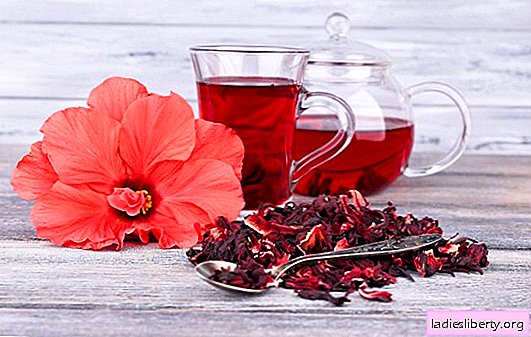
It is not always possible to grow violets at home. The plant is capricious, often from improper care is sick and dies. To avoid this situation, you need to know all the features of the flower.
How to create a suitable microclimate for growing violets at home
Home violet or Saintpaulia is a herbaceous plant with a basal rosette of pubescent leaves. It blooms almost all year round; there is no pronounced dormant period. Flowers of various handicap and color. Today, there are a great many varieties and varieties of violets.
For full bloom violet needs a lot of light, but it does not tolerate direct sunlight. The best place in the house is the east, northwest or north windowsill. On the south window, the plant is shaded from the midday sun, which burns leaves and flowers. You can grow violets on a table near the south window.
It is important that daylight hours are at least 14 hours.
Advice! If you illuminate the violet in the winter, then it will bloom for a long time.
In the room where the violets grow there should not be drafts. The optimum temperature for the plant is + 18 ... 24 ° C. If the indicators fall below + 15 ° C, then growth slows down. The violet does not tolerate sharp temperature fluctuations, so the temperature is slightly reduced for winter maintenance.
Another important condition for the successful cultivation of violets is air humidity. It should be increased, approximately 60 - 80%. However, there should not be water drops on the leaves and flowers.
Planting and growing violets: watering mode at home, soil requirements and other care features
Violets are grown in loose and nutritious soil, which can be purchased at the store or prepared independently.

For this you need:
- turf land;
- leaf humus;
- sand.
Mix all the ingredients in equal proportions and add a spoonful of superphosphate and bone meal. To loosen the soil, you can put perlite or foam. To increase the moisture capacity of the substrate, use sphagnum moss.
The violet pot is chosen small, slightly larger than the diameter of the outlet. In a spacious pot, the plant does not bloom for a long time. Before landing, drainage holes are made at the bottom, a layer of expanded clay is laid, then the soil.
During planting, you need to monitor the core of the outlet, it can not be deepened, otherwise the senpolia will rot.
After planting, the plant is well watered.
In the future, watering is carried out as necessary. It is best to water young plants by immersion or in a pan. Top watering is not done, the risk of overflowing the flower is very large, the roots rot. To determine that the time has come to water the violet can be according to the state of the soil - it must be completely dry.
Advice! If the violet lowered the leaves, then it needs to be watered.
When caring for a violet at home, do not forget about top dressing. They will help the plant to fully bloom for a long time. Use special top dressing for senpolia or any complexes for flowering plants. Fertilizers are applied from spring to autumn, every 10 to 14 days.
The violet is transplanted as it grows, the pot is used a little more than the previous one. Adult specimens are transplanted less often, but the soil in the pot is changed annually. For this, the plants are removed from the pot, filled with a new substrate and the violet is planted again.
With good care, the violet at home can live and bloom for 15 years or more. However, adult specimens lose their decorativeness, stretch and expose the lower part. Such plants need to be re-root.
Problems with growing violets at home: how to recognize diseases and cure the plant
Home senpolia rarely get sick, but if the conditions of detention are not suitable, then problems cannot be avoided. Most often, violets affect such diseases:
- powdery mildew;
- Fusarium
- rust;
- gray rot;
- late blight.
It is important to recognize the disease in time to begin treatment.
Powdery mildew is manifested by a white coating on the leaves and petioles. It arises as a result of insufficient lighting, cold content with high humidity, lack of nitrogen, phosphorus or potassium in the soil. To get rid of the manifestation of powdery mildew, the violet is sprayed with a solution of Fundazole.

Fusarium or rot sockets occurs after waterlogging of the soil, too large a pot, low temperature in the room and heavy soil.
The disease can be recognized by the state of the plant, leaf petioles become brown and disappear. Violet roots darken and easily come off the ground. It is not always possible to save a diseased plant. It is necessary to immediately remove all affected parts and spray the soil with fungicide.
Rust manifested by characteristic spots on the leaves and petioles. Gradually the leaves die off. You can destroy the fungus with Bordeaux liquid or another fungicide.
Gray rot developing rapidly, it is difficult to save the plant. More often it is thrown along with the soil. You cannot reuse the soil mixture. It appears as a gray coating on the surface of the earth, the leaves rot and die.
Late blight violets not treated. The plant is removed along with the pot and soil. The disease affects the root neck, manifested by brown spots on the leaves. Violets are affected in conditions of high humidity in combination with a low ambient temperature.
Can pests settle on violets: ways to control insects
Violets are often affected by pests, especially if they are located next to other plants.
If cyclamen is located near the senpole, then spider mite will definitely move to her. The pest can be recognized by brown punctures on the leaves.
The insect feeds on the plant’s cell sap; it gradually fades. Violet is immediately treated with Actellic or another acaricide. They work in the fresh air and always in a mask.

With garden flowers, they can get into the house thrips. They are dangerous for the senpolia, as they suck the juice from the leaves. Small black insects are visible to the naked eye. Actellik is used as a fight.
Worms feed on the roots of violets, settle on young plants. At the site of the lesion, the flower is deformed and turns red. Pest can only be detected by transplantation or by the acidic smell of the soil. Acaricides are used to combat.
From dampness in the soil start midges, mosquitoes, springtails, wood lice. They lead to decay of the roots and leaves, the soil is compacted, the respiration of the plant slows down. You can get rid of pests with the help of Fitoverm.











